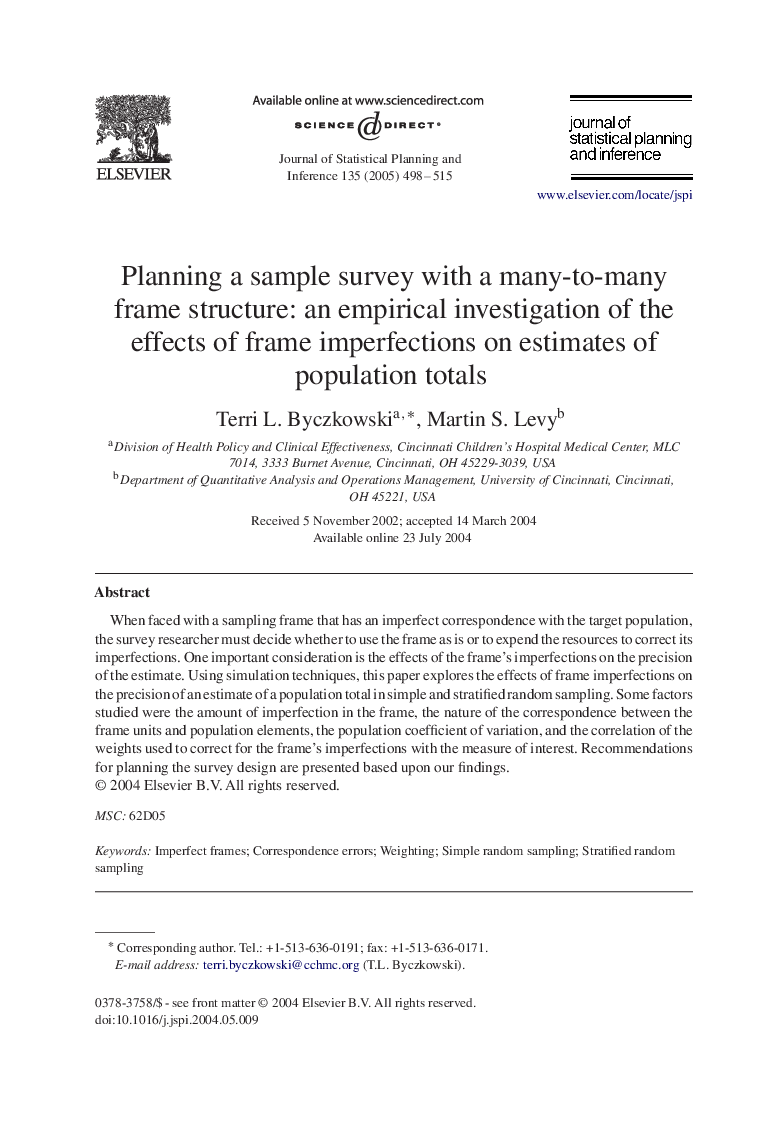| Article ID | Journal | Published Year | Pages | File Type |
|---|---|---|---|---|
| 10524931 | Journal of Statistical Planning and Inference | 2005 | 18 Pages |
Abstract
When faced with a sampling frame that has an imperfect correspondence with the target population, the survey researcher must decide whether to use the frame as is or to expend the resources to correct its imperfections. One important consideration is the effects of the frame's imperfections on the precision of the estimate. Using simulation techniques, this paper explores the effects of frame imperfections on the precision of an estimate of a population total in simple and stratified random sampling. Some factors studied were the amount of imperfection in the frame, the nature of the correspondence between the frame units and population elements, the population coefficient of variation, and the correlation of the weights used to correct for the frame's imperfections with the measure of interest. Recommendations for planning the survey design are presented based upon our findings.
Related Topics
Physical Sciences and Engineering
Mathematics
Applied Mathematics
Authors
Terri L. Byczkowski, Martin S. Levy,
